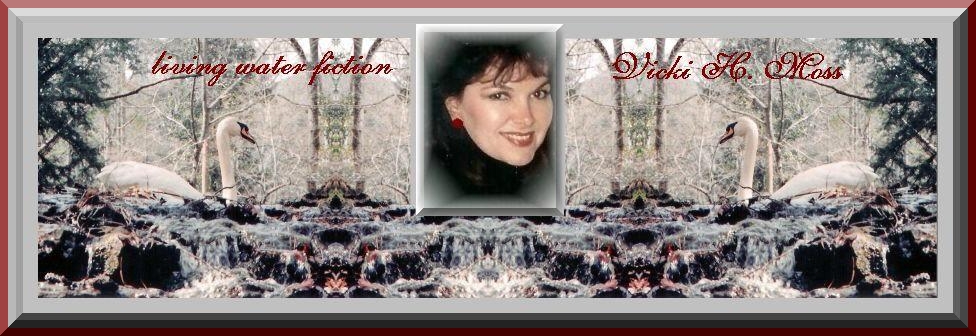
~ Vicki's Blog ~
-- Welcome -- About Me -- Fiction -- Non-Fiction -- Poetry -- Inspirational -- Young Adult -- Kids -- Awards --
-- View -- Memoir -- My Garden -- Flowers -- Tea Time -- Photos -- Faq -- Blog -- Store -- Links --

Posted October 8, 2010
"BREAD OF WRITING"

"Bread is one of the oldest prepared foods, dating back to the Neolithic era. The first bread produced was probably a cooked version of a grain-paste, made from ground cereal grains and water, and may have been developed by accidental cooking or deliberate experimentation with water and grain flour. Yeast spores are ubiquitous, including the surface of cereal grains, so any dough left to rest will become naturally leavened.[2] There were multiple sources of leavening available for early bread. Airborne yeasts could be harnessed by leaving uncooked dough exposed to air for some time before cooking. Pliny the Elder reported that the Gauls and Iberians used the foam skimmed from beer to produce 'a lighter kind of bread than other peoples.' Parts of the ancient world that drank wine
instead of beer used a paste composed of grape juice and flour that was allowed to begin fermenting, or wheat bran steeped in wine, as a source for yeast. The most common source of leavening, however, was to retain a piece of dough from the previous day to use as a form of sourdough starter."
Thanks to Wikipedia for that interesting information. And, that folks, is why writing is related to making bread. There's a lot of accidental cooking when it comes to writing. There's a whole lot of deliberate experimentation. It's all pretty ubiquitous. After the words have spilled over onto paper, they need to sit awhile, perhaps in a drawer or if one is brave enough out on a desktop where they can air - that way the story can take a breather before you come back to it for a revision. Or two. Or ten.
Like the ancients, a good way to make the writing expand is to retain a piece of what you wrote the previous day so you can then use it as a form of starter. Sometimes it will be rolled out too long and too thin. Characters will be flat more than round. Sometimes it will remind you of sweetbread. More than not, it will remind you of sourdough. That's where revision is helpful.

If you really want to write creative nonfiction, shape your poems or stories to look like turtles or alligators and draw on a couple of eyes. Add a mouth for voice and voila - you're really cooking!
And if the editors and fate are with you - you'll be making bread.
Photo credit - Peyton (thanks to San Francisco's artistic sourdough breadmakers)